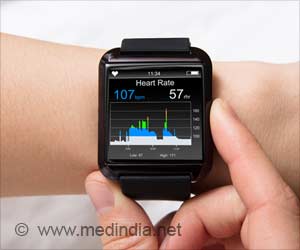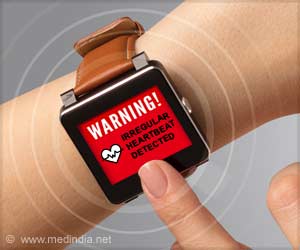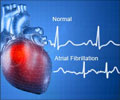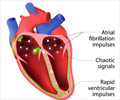Highlights:
- Study monitoring patients’ heart rhythm found that there was 96.6 percent sensitivity and 94.1 percent specificity for atrial fibrillation (AF) detection with a mobile heart monitor compared to traditional physician-interpreted ECGs
- With a smartphone-enabled monitoring system that can record a medical-grade ECG in just 30 seconds, a person’s heart rhythm can now be checked anytime, anywhere and also sent to the physician for analysis
The monitoring technology devices available nowadays are either quite challenging to carry or use, limited in duration, invasive or require a trip to the doctor's office. The invention of smartphone-enabled medical peripherals has made ambulatory detection of AF a lot simpler.
Kardia Mobile Cardiac Monitor – KMCM
The KMCM is an FDA-cleared 30-second ECG or electrocardiogram that can instantly detect either a normal heart rhythm or atrial fibrillation anytime and in any location.It is a pocket-sized two-electrode cardiac rhythm recorder that connects to a smart device. All that the patient has to do is be comfortably seated, open the Kardiaapp on their phone and press the “record now” button.
Next, they have to place the electrode within 30 cm of the mobile device and lightly place 2 or more fingers of both the hands on the two given pads.
After giving the monitor a few seconds for the rhythm to smooth out, the patient has to keep the arms still for at least 30 seconds to ensure a complete recording. The device then sends the reading wirelessly to the smartphone where the results can be viewed on the application – which is an ECG trace, a measure of the heart rate, and whether it is a “Normal Sinus Rhythm” or a “Possible Atrial Fibrillation,” the most common type of serious arrhythmia.
The KMCM's newly automated rhythm analysis uses an algorithm specially developed to detect AF.
The investigators made the AF patients undergo simultaneous recordings of their heart rhythm via both the mobile monitoring device and a conventional 12-lead ECG.
The results were directly compared; the mobile monitoring proved to be 96.6 percent sensitive and 94.1 percent specific for AF detection compared to physician-interpreted ECGs when conditions were met for the automated rhythm analysis to provide a diagnosis.
"This study is the first independent validation of this smartphone monitor system in the clinical setting using near simultaneous 12-lead ECGs," said lead investigator Khaldoun G. Tarakji, MD, MPH, Section of Cardiac Pacing and Electrophysiology, Heart and Vascular Institute, Cleveland Clinic, Cleveland, OH, USA. "In addition to providing an instantaneous rhythm interpretation, this smartphone monitor system is able to transmit a recording to a secure server where the recordings can be directly reviewed."
There was a low false negative detection rate of 3.4 percent. Also, some of the results were "unclassified" by the automated system and showed neither a “Normal” nor "Possible AF" reading. When investigators analyzed these results, they found that the majority of these "unclassified" readings were either because the recordings were less than 30 seconds in duration, the heart rate recorded was under 50 beats per minute [bpm] or over 100 bpm, or that there was too much noise during the rhythm capture.
"Given the predefined algorithm operating parameters and high rate of "unclassified" recordings with resultant missed AF instances, this smartphone monitor's algorithm is not suited to be a replacement for physician analysis," noted Dr. Tarakji. "However, given its highly accurate performance when able to provide an interpretation, it holds potential as an adjunct to clinical decision making. Patients can use an automated AF detection as a basis for pursuing additional medical follow-up, and clinicians may use it to develop treatment plans supported by more objective data rather than relying only on symptoms."
The KMCM device and app were also easy to use according to the study participants. They also felt that the anxiety to their AF diagnosis was a bit eased because of having access to a mobile monitoring device. Investigators hope that in the future, these types of smart device apps and devices will develop more of a care partnership between doctors and patients, in which they can work together as a team to monitor chronic conditions like Atrial Fibrillation.
Reference:
- Amila D. William, Majd Kanbour, Thomas Callahan, Mandeep Bhargava, Niraj Varma, John Rickard, Walid Saliba, Kathy Wolski, Ayman Hussein, Bruce D. Lindsay, Oussama M. Wazni, Khaldoun G. Tarakji. Assessing the accuracy of an automated atrial fibrillation detection algorithm using smartphone technology: The iREAD Study. Heart Rhythm, 2018; DOI: 10.1016/j.hrthm.2018.06.037
Source-Medindia













